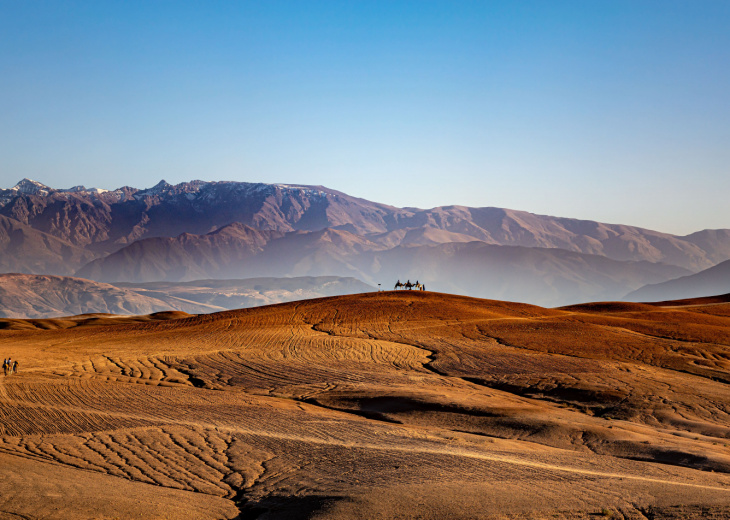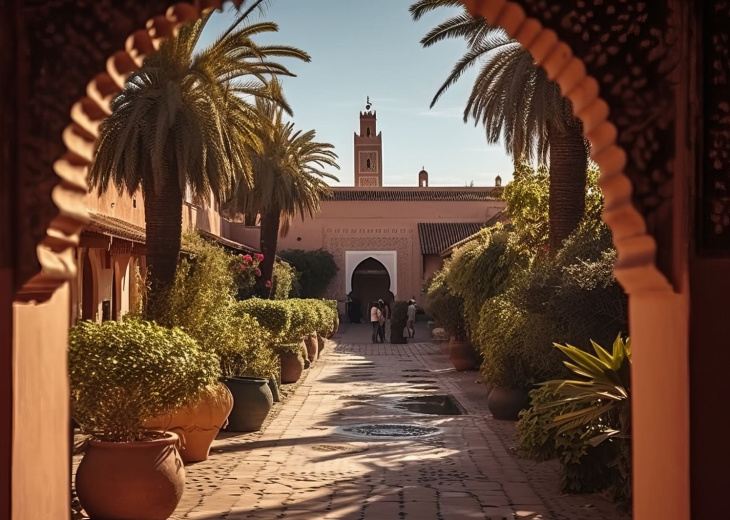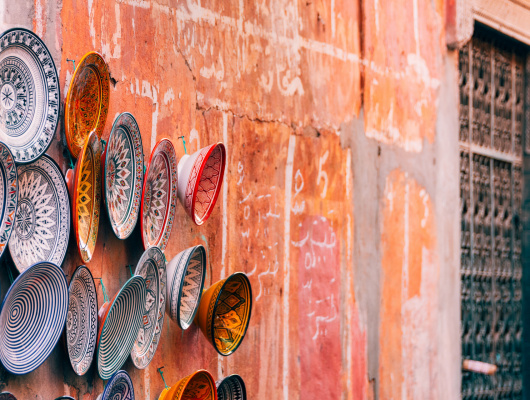
Morocco is a mostly Muslim country, and it’s important to note that it veers much more towards this than it did in the past. Indeed, the non-muslim minority practically disappeared in the 1950s and 1960s.
Muslims represent around 98.5% of the population, and are Sunni Malikis, with a good majority being native Maghrebis. In theory, a Moroccan over three years of age should attend the mosque every Friday. Islam is considered the state religion according to article six of the constitution, which also guarantees freedom for all religions to practise their faiths in Morocco. Furthermore, the king is the supreme religious head of the Muslim population in the country, carrying the title of Commander of the Believers, as did his predecessors.
Discover our sample itineraries that will allow you to explore Morocco on a unique trip, depending on the time you have available…




Among these, we can count the one per cent who are Christians. They represent one per cent of the population, although they made up five per cent fifty years ago. Similarly, the Jewish community’s two per cent comprises approximately twenty thousand people, whereas four decades ago, they represented a grouping of four hundred and fifty, which was four per cent of the population. They have nearly all emigrated to France or Israel since the 1960s, with those that still remain now acting as senior advisors to the king and the business world, and known as Jews of the court.
Regarding the longevity of their religion in Morocco, the Jews were present in Roman times, especially in the High Atlas, and this was the case before the country became essentially Muslim. Other Jews came out of Spain at the end of the fifteenth century, after being expelled in 1492. Jewish citizens were considered as dhimmi or non-muslim protected persons, but they suffered wide-spread discrimination.
Lastly, we shouldn’t forget the human rights activists, who follow the lead of the late celebrated Abraham Serfaty.
Among these, we can count the one per cent who are Christians. They represent one per cent of the population, although they made up five per cent fifty years ago. Similarly, the Jewish community’s two per cent comprises approximately twenty thousand people, whereas four decades ago, they represented a grouping of four hundred and fifty, which was four per cent of the population. They have nearly all emigrated to France or Israel since the 1960s, with those that still remain now acting as senior advisors to the king and the business world, and known as Jews of the court.
Regarding the longevity of their religion in Morocco, the Jews were present in Roman times, especially in the High Atlas, and this was the case before the country became essentially Muslim. Other Jews came out of Spain at the end of the fifteenth century, after being expelled in 1492. Jewish citizens were considered as dhimmi or non-muslim protected persons, but they suffered wide-spread discrimination.
Lastly, we shouldn’t forget the human rights activists, who follow the lead of the late celebrated Abraham Serfaty.
Continue your discovery of our country and the preparation of your trip by exploring other articles in our travel guide dedicated to Morocco!


